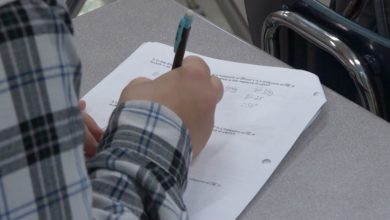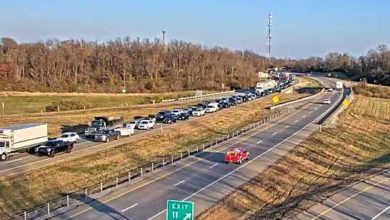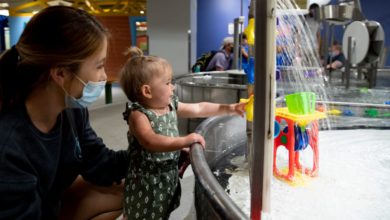The nation's worst bout of inflation in decades got a little worse last month.
Inflation hit a 39-year high in November as an economy still grappling with the effects of the COVID-19 pandemic drove strong consumer demand along with persistent supply-chain snarls and labor shortages.
The consumer price index jumped 6.8% from a year earlier, the fastest pace since 1982, as prices surged for staples such as food and gasoline, as well as new and used cars, rent and physicians' services, the Labor Department said Friday. That's up from 6.2%, which was a three-decade high, in October.
Excluding volatile food and energy items, so-called core prices rose 4.9% annually, a new 30-year high.
On a monthly basis, overall consumer prices increased 0.8% in November while core prices advanced 0.5%.
Although wages are also climbing as a result of the worker shortages, they’re not keeping pace with the soaring prices, squeezing lower-income households.
"Not since the release of (Michael Jackson's) Thriller have inflation pressures been this strong in the U.S.," TD Economics wrote in a note to clients.
►Why is inflation so high?:The reasons and solutions are complicated
►How does inflation affect you?:Increase in prices for gas, food, energy raise concern
Profit during inflation?:These 5 tips could help investors beat rising prices
Last month, prices rose 6.4% annually for groceries, with jumps of 13.9% for beef, 16.8% for pork, 8.4% for chicken and 8% for fish.
Gasoline prices soared 58.1% over the past year, rising 6.1% monthly in November.
Used car and truck prices shot up 31.4% from a year ago and new vehicle costs climbed 11.1% as the industry continues to grapple with a chip shortage that’s curtailing new vehicle production.
Rent increased 3% and hotel rates leaped 22.2%, edging up nearly 3% just last month. Prices rose 11.8% for furniture and bedding, and 5% for both appliances and clothing.
A recent drop in crude oil prices should filter through to pump costs and likely means overall inflation has peaked and should cool somewhat in December, says economist Bill Adams of PNC Financial Services Group.
But core inflation still has further to rise, says Ian Shepherdson, chief economist of Pantheon Macroeconomics.
Kathy Bostjancic, chief economist of Oxford Economics, expects inflation to remain elevated through early 2022 before supply and demand come into better balance and inflation softens significantly the second half of next year.
After languishing below normal levels for most of the past decade, inflation has spiked since spring as COVID vaccinations increased and the economy reopened following last year’s government-ordered shutdowns.
Consumers who were already snapping up goods such as TVs and appliances while stuck at home during the health crisis began dining out and traveling more. Many were ready to splurge after they built up more than $2.5 trillion in additional savings from federal stimulus checks and enhanced unemployment benefit, as well as cutting back during the lockdowns.
But a supply network still hobbled by the pandemic wasn’t prepared for the buying binges. Many overseas factories are running at partial capacity. Shipping containers are in short supply. And many truck drivers and warehouse workers are still caring for kids at home or fearful of contracting COVID.
The rare collision of robust demand and skimpy supplies has triggered widespread product shortages and higher prices just as the holiday shopping season shifts into high gear.
Meanwhile, hotels, restaurants and stores are also struggling to hire workers, sharply pushing up wages and forcing outlets to further lift prices.
Although the price increases initially were largely confined to COVID-related products and services, like autos, air fares, hotels, they've broadened to include a wide range of items, including food, rent and gasoline.
Republicans in Congress largely have blamed President Biden for the inflation, pointing to the $1.9 trillion American Rescue Plan earlier this year that further stoked consumer demand with $1,400 stimulus checks for most individuals and the renewal of enhanced jobless benefits.
Many economists chiefly point to the supply bottlenecks and say inflation should ease substantially as the kinks are worked out by the second half of 2022.
In an effort to curtail the spiraling prices if they don't soon fall, the Federal Reserve next week is expected to accelerate the winding down of its bond-buying stimulus, a move that would clear the way for interest rate hikes as early as spring.
Inflation hits consumer sentiment:Poll: One-third of Americans see inflation and bills as their top concern, ahead of COVID
Inflation chart by year
Source link









